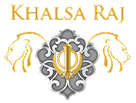Yoga & Meditation for Reducing Stress and Overwhelm...
I've been practicing and teaching Kundalini Yoga and meditation since 1972. I wrote and published a book on its 'encouraged daily practice' in 2014. Explore, read reviews and consider purchasing it here.
Below are several breath/meditation practices you can consider doing on your own to help deeply relax, refresh, gain strength and begin to clear anything troubling in your mind. These will leave you feeling alert, present and composed. Jot Singh
1) ONE MINUTE BREATH (Breathing for this is done through the nose only - the inhale and exhale)!
20 seconds to inhale, 20 seconds to hold, 20 seconds to exhale - is the Ideal and too long for most people!!
Start inhaling for 10 seconds, holding for 10 seconds, exhaling for 10 seconds. Even 5 second segments are fine, if you find 10 second segments are too much after a few minutes. Continue for a minimum of 7 minutes. Doing this for 11 or 22 minutes can be most beneficial, if you are dealing with a lot in your life...
BENEFITS
Optimized cooperation between the brain hemispheres.
Dramatic calming of anxiety, fear and worry.
Openness to feeling one's presence and the presence of the spirit.
Intuition develops.
The whole brain works - especially the old brain and the frontal hemispheres.
Here are some tips to make the One-Minute breath easier:
To start, make yourself very comfortable. Have a shawl on around your shoulders/spine that you can remove without exertion if you get warm. Sitting in a chair with a straight spine or on the floor sitting crosslegged - either is fine.
Be very still.
Once to are set, take 3 minutes to relax and deepen your breathing through your nose only, expanding your chest and filling your lungs fully.
Inhale slowly and steadily, filling your lower abdomen, your stomach area, going up to your lungs and then all the way up to your chest.
Lock the breath once you've filled your upper chest (after 20 seconds).
Hold (20 seconds).
Then exhale, slowly gently and steadily.
At the end of 20 seconds, gently reverse to an inhale and begin again.
Don't fight your breath. Be relaxed. Having trouble working your way into? Here are two approaches:
1) Give yourself permission to work up to it. Start inhaling for 10 seconds, holding for 10 seconds, exhaling for 10 seconds. Take a week or two and then increase to 15, 15, 15, and then to 20, 20, 20.
2) Start with 20, 20, 20. If you find yourself struggling against your breath, complete the breath and then begin one minute of deep breathing. After a minute, start again - inhaling for 20 seconds, holding for 20 seconds, exhaling for 20 seconds.
________________________________________________________________________
2)


Related to #2 just above - 'Canon Fire the breath out' - is a forceful, powerful exhalation through a rounded mouth.
_________________________________________________________________________
3) SEGMENTED BREATH FOR ANXIETY
AFFIRMATION OR MANTRA: This is a counting breath in a 1:2 ratio. Count to four on the inhale and count to eight on the exhale. You can also use an affirmation like “I am, I am” on the inhale and “I am, I am. I am, I am” on the exhale. The mantra Sa Ta Na Ma (the nuclear form of he mantra Satnam) is also very useful for ratio counts of four. Example: Inhale Sa Ta Na Ma once and exhale Sa Ta Na Ma twice.
TIME: Three to eleven minutes.
PHYSICAL POSITION: Sit comfortably cross-legged on the floor or sit upright in chair with both feet flat on the ground. Hands can be folded in the lap or in the gyan mudra hand position (in- dex finger and thumb touching) with the arms straight and the edges of the hands at the knees.
INSTRUCTION: This is an unequal breathing rhythm done in segments or sniffs. All inhales and exhales are done through the nose in a 1:2 ratio (inhale is half as long as the exhale). The breath is segmented into small equal sniffs and is done by a small inhale, inhale, inhale, inhale and then twice as many exhales done in the same fashion. Keep the breath smooth in transition, not holding the breath in or out.
BREATH: With the eyes gently closed and focused at the root of the nose, inhale in eight slow even and rhythmic segments. Ex- hale in four, slow, even and rhythmic segments. Make the breath very smooth in transition, in other words do not hold the breath in or out. When the lungs are full, empty them and when the lungs are empty, fill them again. If you can extend the count even more with comfort, then that is wonderful. For instance, you would inhale in eight segments and exhale in sixteen segments.
TO END: Inhale deeply, briefly hold the breath, and then relax.
COMMENTS: This segmented breath in a 1:2 ratio will stimulate the parasympathetic nervous system, and can help relieve anxiety.
_________________________________________________________________________
4) When you need the strength to handle anything and everything!

5) For Radiance and Energy!

6) Meditation for Balance and Stress Relief
7. Neutralize Tension!!

8. 4 Stroke Breath technique - for greater patience and tolerance!
Click this link for guidance: https://youtu.be/htgd6s3gqP0

9. Cold water therapy - from my teacher of many years Yogi Harbhajan Singh
10. A new workshop, 'begin to master fear and enable a miracles' which Jot Singh will be teaching around the world:
